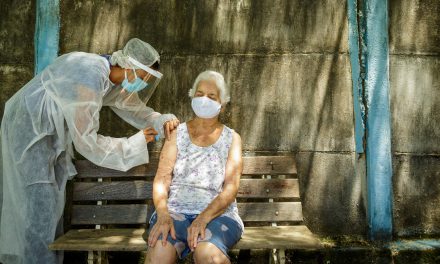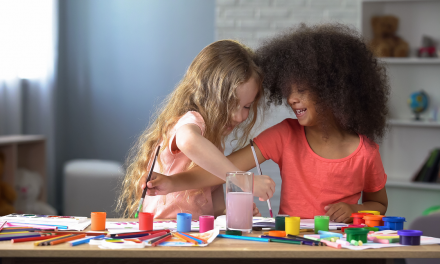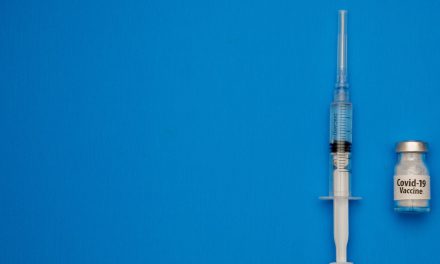Back in 1854, poet Henry David Thoreau wrote, “The mass of men lead lives of quiet desperation.” Unfortunately, modern statistics indicate his long-ago observation still rings true today.
The National Alliance on Mental Illness notes that in any given year, one in five American adults—43.8 million—experiences a mental illness. For one in 25, that illness substantially interferes with or limits one or more of the person’s major life activities.
This is huge. These are people we care about: family members, neighbors, coworkers, and even ourselves. And the problem starts early. Half of all chronic mental health conditions begin by age 14; three-quarters take root by age 24.
Stigma’s Chilling Effect
No one debates the scope of the problem. But the stigma associated with mental illness is so virulent, only about 40 percent of those affected pursue treatment. And those souls often wait a decade or more before they seek help.
Mental Health America (MHA) recently released a report, 2021 State of Mental Health in America. This year’s report spotlights COVID-19’s impact on mental health from 1.5 million Americans who were screened by MHA from January 2020 through September 2020. Among the key findings are:
- The number of people looking for help with anxiety and depression has skyrocketed. From January to September 2020, 315,220 people took the anxiety screen, a 93 percent increase over the 2019 total number of anxiety screens. 534,784 people took the depression screen, a 62 percent increase over the 2019 total number of depression screens.
- The number of people screening with moderate to severe symptoms of depression and anxiety has continued to increase throughout 2020 and remains higher than rates prior to COVID-19. In September 2020, the rate of moderate to severe anxiety peaked, with over 8 in 10 people who took an anxiety screen scoring with moderate to severe symptoms. Over 8 in 10 people who took a depression screen have scored with symptoms of moderate to severe depression consistently since the beginning of the pandemic in March 2020.
- More people are reporting frequent thoughts of suicide and self-harm than have ever been recorded in the MHA Screening program since its launch in 2014. Since the COVID-19 pandemic began to spread rapidly in March 2020, over 178,000 people have reported frequent suicidal ideation. 37 percent of people reported having thoughts of suicide more than half or nearly every day in September 2020.
- Young people are struggling most with their mental health. The proportion of youth ages 11-17 who accessed screening was 9 percent higher than the average in 2019. Not only are the number of youth searching for help with their mental health increasing, but throughout the COVID-19 pandemic youth ages 11-17 have been more likely than any other age group to score for moderate to severe symptoms of anxiety and depression.
- Rates of suicidal ideation are highest among youth, especially LGBTQ+ youth. In September 2020, over half of 11-17-year-olds reported having thoughts of suicide or self-harm more than half or nearly every day of the previous two weeks. From January to September 2020, 77,470 youth reported experiencing frequent suicidal ideation, including 27,980 LGBTQ+ youth.
- People screening at risk for mental health conditions are struggling most with loneliness or isolation. From April to September 2020, among people who screened with moderate to severe symptoms of anxiety or depression, 70 percent reported that one of the top three things contributing to their mental health concerns was loneliness or isolation.
- People who identify as Asian or Pacific Islander are searching for mental health resources more in 2020 than ever before. The proportion of screeners identifying as Asian or Pacific Islander increased 7 percent, from 9 percent of screeners in 2019 to 16 percent in 2020.
- While rates of anxiety, depression, and suicidal ideation are increasing for people of all races and ethnicities, there are notable differences in those changes over time. Black or African American screeners have had the highest average percent change over time for anxiety and depression, while Native American or American Indian screeners have had the highest average percent change over time for suicidal ideation.
How to help
If a friend or family member is showing signs of a mental health problem or reaches out to you for help, MentalHealth.gov recommends you offer support by:
- Finding out if the person is getting the care that they need and want — if not, connect them to help.
- Expressing your concern and support.
- Reminding them that help is available and that mental health problems can be treated.
- Asking questions, listening to ideas, and being responsive when the topic of mental health problems come up.
- Providing reassurance that you care about them.
- Offering to help with everyday tasks.
- Including your friend or family member in your plans, continuing to invite them without being overbearing, even if they resist your invitations.
- Educating other people so they understand the facts about mental health problems and do not discriminate.
- Treating people with mental health problems with respect, compassion, and empathy.
There are benefits to therapy
Mental health therapy takes many forms (e.g., counseling, medication, occupational therapy, and vocational rehabilitation), and can facilitate remarkable results when paired with strong support from friends, family, and health professionals. Touted benefits include:
- Decreased problems with daily living.
- Increased sense of joy and contentment.
- Repaired and enhanced relationships.
- Improved work function, often leading to financial stability.
- Increased activity.
- Reduced social isolation.
- Increased quality of life and overall life satisfaction.
For help, text HOME to 741741 for free, 24/7 crisis counseling. SAMHSA (Substance Abuse and Mental Health Services Administration) offers a national helpline, 1.800.662.HELP (4357).








